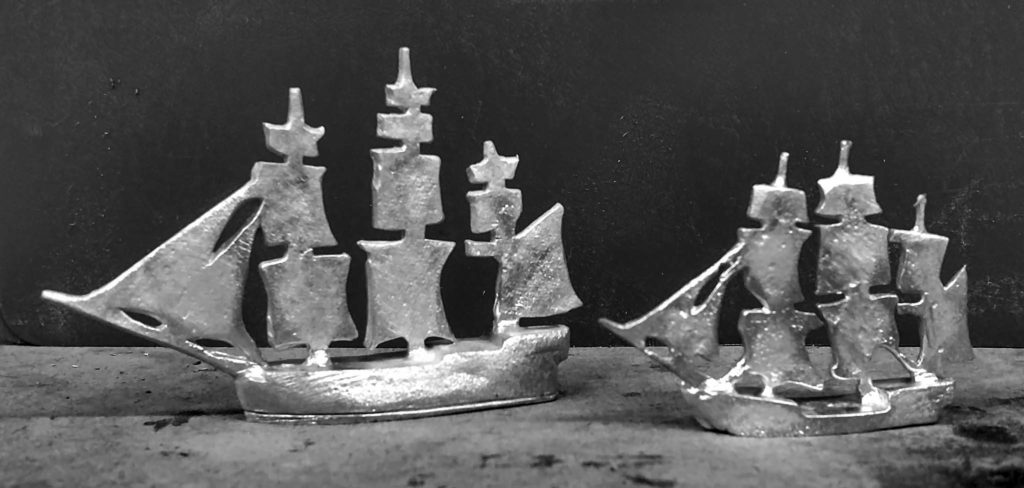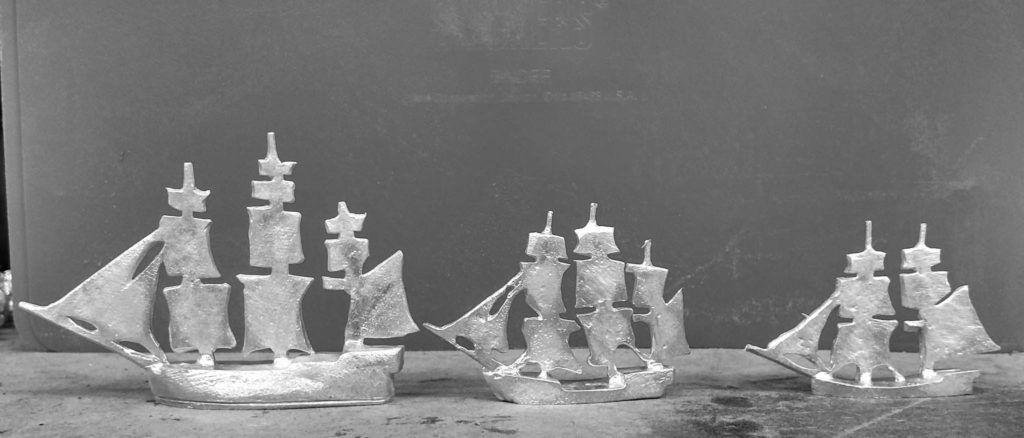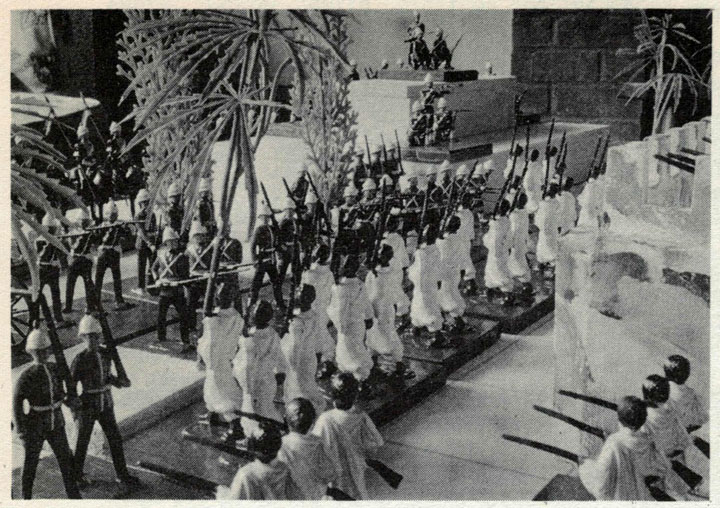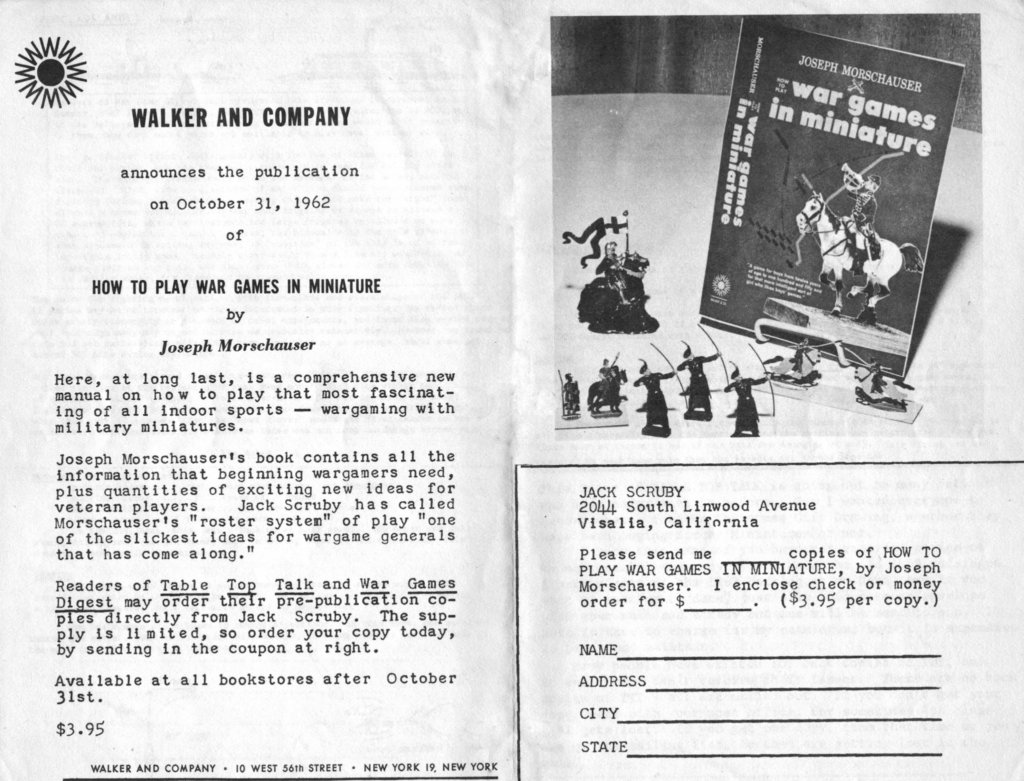Being a summary of Joseph Morshauser’s letter/article found in Donald Feathertone’s, 1966, book: Air War Games pages 100 to 101.
Lacking war game opponents, Joe spent some time building model airplane kits (WWI aircraft) while watching TV. Finally, while on vacation was able to get together with some opponents and play out an air combat game. Apparently, the game worked out quite well, and in fact he claimed it was, in some ways more fun than land combat games.
His game involved quarter-scale aircraft; (he says ‘larger than Airfix’; while I wonder if he really meant ¼ scale – meaning 25% the size of the real airplane? This seems mighty large for his war game table), a bombing run as well as dogfights. The situation was that three bombers had to run across the table and return a number of turns later. All the while fighter planes were attempting to shoot them down. Of course the bombers had fighter escort, some dogfights were in the mix as well. The game used a ‘Roster System’ to track hits (no knocking planes out of the air with a single hit!). He describes the games as ‘… a hell of a lot of fun’. His rules kept in a bit of detail, as he felt that otherwise the game would be too simple and too short.
The game was evenly matched, points-wise, but with the Germans having fewer fighters, given the inclusion of bombers. The side with the most remaining points at the end of the game was the winner. Points were scored, by the Germans, for bombing run results. In the end the Germans lost; the bombing run didn’t go really well and they lost two bombers on the return. The Allies scored more kills, thus end the game with more points.
The next game described was an air race game. This was modeled after the Thompson Trophy races. Three planes raced around a course marked by checkered pylons. The (huge scale) planes were quite colorful and built by Joe himself. The setup event included stands and spectators. The rules covered all the crazy maneuvering required by the real planes in real races. I the end Joe won the race, beating out Hank in the end. Joe had plans to use more and smaller aircraft in hopes of making a wildly fun game for 6 players.
Notes concerning Joe’s war game setup:
We know that, at least in mid-1963, Joe’s table was 17 feet x 6 feet. If we assume he didn’t have the room for or did not build a larger, the table referred to in this piece is the same (Joe’s address remained the same through the 1960s, again safe to assume same location). Given the assumed size of his war game table, I wonder what scale aircraft were used in the games described? Quarter-scale seems too large for the the size of his table. They would be impressive in that scale, but it seems an unlikely size.
As for rules, to date I’ve not been able to track down, even a summary of his air rules (combat or racing). The search continues…





